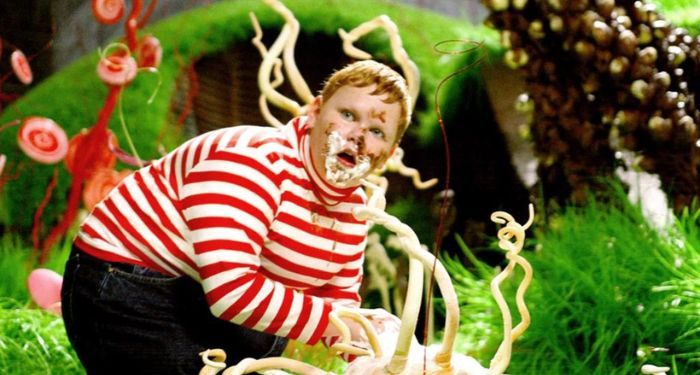Roald Dahl’s books are being edited to make them less offensive. Joke is, nothing has really changed. No matter how many tweaks are made to try and push classics like Charlie and the Chocolate Factory into more politically correct territory, Dahl’s books are still harmful. There are a number of things that make defending Roald Dahl a questionable move, but I’d like to address the way his books reinforce stereotypes about physical attractiveness. Dahl wasn’t creative enough to make his antagonists’ actions reveal their character, and his shortcuts in using negative physical descriptions as a stand-in for actual development have damaged generations of readers.
Dahl’s books repeatedly describe villainous characters as ugly and fat, but he doesn’t stop there. He describes clothes as tight as sausage casings, rolls of flesh bulging. He talks about bottle-dyed hair and caked-on makeup and wrinkles and hairy upper lips and moles with obvious disgust. Through his descriptions of antagonists, and especially as they’re placed against the lithe, lovely descriptions of his heroes, Dahl sends a clear message that a person’s physical descriptions will match the way they act.
The result is two-fold: there is a good way to look and a bad way to look, and if you look bad, you are bad. I can hear eye rolls from here. I know that people will be on the defensive, insisting that I am oversimplifying. It’s okay to be wrong. Yes, I’ve read his quote about thinking good thoughts and they’ll shine out of your face like sunbeams and make you lovely no matter what you look like. It’s crap and does not match the way he wrote characters throughout his entire career.
The hilarious part is, fat is not a bad word, and changing it in his books won’t remove the spirit of what he was saying. Calling Augustus Gloop “enormous” instead of “fat” doesn’t correct the massive (pun intended) inaccuracy that fat people are greedy. He is literally using an overweight child as a caricature of avarice. No big deal, except that in 2023 people are winning Oscars for putting Brendan Fraiser in a fat suit so he can cry while he shoves food into his mouth. These disgusting tropes about fat people are continued to this day, and I am positive that depictions like this in children’s literature are part of the problem.
Changing a word here and there does not change the fact that Dahl meant what he said when he wrote these books. He happily perpetuated the idea that physical attractiveness and body size are reliable measures that can be used to determine the character of a person. Not a single Dahl story that we hold dear is worth the damage that these ideas can cause to people of every size. Edited or not, these books are not worth saving.
One of the most damaging things about Dahl’s work is the audience he intended to reach: children between the ages of 8 and 12. This is a crucial in our character development when many of our ideas about the world are being solidified. Input from family, friends, school communities, television, and, yes, books are huge parts of how we decide what our values are and how we will view the world around us. Stop and consider the way a body of work that continuously disparages fat and ugly people would affect a person reading those books at age nine. Now consider that these books are held up by all as a paragon of storytelling magic. It’s not (again, pun intended) pretty.
It was very clear to this homely, overweight, book-obsessed girl in the ’90s that I did not match the descriptions of Dahl’s heroes. In the same sentences that laid out the greed, stupidity, or selfishness of villains, physical descriptions included all the things I was scared people would say about me: large thighs, multiple chins, clothes bursting around bodies that were simply too big. If you read this enough, you absolutely start to believe it. Flashy reality shows and music videos sent a message that I should look a certain way, and it might have been easier to overcome if the revered children’s literature being pressed into my hand didn’t back that up with a vengeance.
The move to sanitize Roald Dahl’s books does nothing to change the harm that his words can impart. Why is there such a push to rehabilitate his damaged body of work? Librarians and booksellers are working overtime to highlight books that are inclusive and uplifting, and we don’t have to sacrifice a scrap of magical storytelling to find titles that fit the bill. The good books are out there!
This will obviously leave crusty old ones like Dahl in the dust, and that’s okay. In the end, it’s about protecting the name of an antisemitic jerk who wrote weak character descriptions because he wasn’t talented enough to write complex villains or multidimensional heroes. It’s like praising Seuss for his rhyming when he made up half the words. There is so much better out there, and Roald Dahl does not deserve a second chance.
